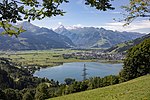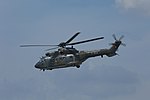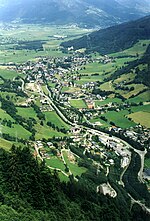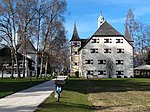Zell am See Airport
Airports in AustriaBuildings and structures in Salzburg (state)European airport stubsTransport in Salzburg (state)Zell am See

Zell am See Airport (German: Flugplatz Zell am See, ICAO: LOWZ) is a public use airport located 4 kilometres (2 mi) south of Zell am See, Salzburg, Austria. Usable for airplanes up to 5.7 tonnes.
Excerpt from the Wikipedia article Zell am See Airport (License: CC BY-SA 3.0, Authors, Images).Zell am See Airport
Kaprunerstraße,
Geographical coordinates (GPS) Address External links Nearby Places Show on map
Geographical coordinates (GPS)
| Latitude | Longitude |
|---|---|
| N 47.291416666667 ° | E 12.790083333333 ° |
Address
Flugplatz Zell am See
Kaprunerstraße
5700 , Bruckberg
Salzburg, Austria
Open on Google Maps










